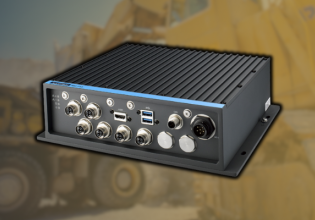Inspecting Oil and Gas Pipelines with Fiber Optics, Drones, and Little Bots
Pipelines are used to transport oil and gas safely and efficiently. In this article, we'll explore some technologies being used to protect and maintain the integrity of oil and gas pipeline infrastructures.
Pipelines are a critical part of the oil and gas industry. They are used to transport energy from one location to another, allowing companies to move large quantities of oil and gas from production sites to refineries and then on to consumers. This article will provide an overview of the importance of oil and gas pipeline systems, types of inspection, and the latest technologies being developed to safeguard their integrity.

Oil and gas pipelines are integral to the transportation of energy to homes and businesses. Image used courtesy of Jim
Why Are Pipelines Important?
According to a paper published in the International Journal of Disaster Risk Science, around 64 percent of energy commodities are transported across the U.S. via oil and gas pipelines. Pipelines are important for helping reduce energy costs, as they can transport large volumes of energy at a lower cost than other methods such as trucks or trains.
While pipelines are considered safer than other transportation methods because they do not require combustible fuels, transporting oil and gas does not come without risks. According to the Pipeline and Hazardous Materials Safety Administration (PHMSA), around 12,505 pipeline incidents were recorded in the U.S. between 2001 and 2020. The incidents resulted in 1,176 injuries, 270 fatalities, and property damages amounting to USD 9.9 billion.
In order to prevent harmful incidents and property damage caused by pipelines, inspecting and maintaining them is crucial.

In-line inspection PIGs, or smart PIGs, are used to ensure the integrity of pipelines. Image used courtesy of TC Energy
Pipeline Inspection PIGs
In-line inspection (ILI) of pipelines is an important part of pipeline maintenance and safety. Traditional inspection methods include different types of ILI pipeline integrity gauges (PIGs), including:
- Caliper and Geometric which use a series of sensors along the pipe to measure its geometry, detecting any structural abnormalities such as buckling or bulging.
- Magnetic Flux Leakage (MFL) which use magnetic fields to detect any changes in the pipe wall thickness or defects that have occurred since it was last inspected.
- Ultrasonic (UT) which use high-frequency sound waves that travel through the pipe wall to detect any anomalies within it.
These methods help detect corrosion, fatigue, or other damage to the pipeline that can lead to leaks or other potential hazards. By using these traditional methods for in-line inspection of pipelines, companies can ensure their pipelines are safe and reliable for operation.
Innovations in Pipeline Inspection
While pigging is an effective method of pipeline inspection, it is not without its limitations. Many PIGs are unable to navigate in more than one direction and many times cannot navigate in complex piping with sharp bends. While PIGs may be a popular option for pipeline inspection, they are not the only tool.

Aerial drones paired with AI could make pipeline inspection more frequent and make remote regions easier to access. Image used courtesy of Vision Aerial
Drone Inspection
To ensure the structural integrity of pipelines and prevent incidents from occurring, researchers are proposing the use of a drone and artificial intelligence reconsolidated technological solution (DARTS). When paired with a "deep learning technique", DARTS researchers believe that the use of drones could help keep track of and assess pipeline conditions more frequently and at a lesser cost than alternative methods.
A number of drone companies currently offer aerial technology that uses sensors and thermal imagining for oil and gas pipeline inspection, aiming to improve worker safety and make inspecting pipelines in remote regions even easier.
Fiber Optic Sensing
A Distributed Fiber Optic Sensing (DFOS) solution from Huawei, known as the Pipeline Fiber Warning Solution, is another inspection alternative based on a smart optical sensor, the OptiXsense EF3000, and a Sensing Algorithm Engine (SAE).
The Pipeline Fiber Warning Solution uses an optical Digital Signal Processing (oDSP) module along with a dedicated algorithm for blind spot correction. Weak signals are collected and modified to amplify the signal collection rate to 99.9 percent.
A vibration ripple detection engine uses multidimensional analysis to restore the process of construction events and improve the accuracy of identification (to 97 percent). Geological research-focused universities have been working alongside Huawei, bringing in vast amounts of geological data to train its sensing technology.

The Guardian Sea Class robotic system. Image used courtesy of Sarcos
Inspection Robots
Autonomous underwater vehicles (AUVs) and pipeline crawler bots are also a novel alternative to traditional inspection.
Last winter, the robotics company, Sarcos, performed field trials for some of its autonomous underwater vehicles (AUVs) and other robotics solutions. The Guardian DX teleoperated dexterous robot, Sapien Sea Class underwater robot, and the Guardian S remote visual inspection robot were among some of the technologies that were tested. Bots like the Sapien Sea Class are just one potential solution for underwater maintenance checks for oil and gas pipelines. The bot comes with a remotely-operated vehicle (ROV) and can be used up to a depth of one kilometer. At the moment, the Sapien is proposed for use in ship hull and propeller shaft inspection.
Pipeline crawler bots, such as those in Nexxis’ Versatrax 150 Pipe Inspection System range, and miniature autonomous Pipebots are another potential solution. The little pipebots use visual and auditory systems to observe and listen to pipes during an inspection. Data collected can help inform operations and maintenance teams of any obstructions or faults in pipeline infrastructure. The mini bots have the potential to help patch up and prevent leaks in sewage systems and could be used for oil and gas pipeline systems.
Pipeline Integrity
Aiming to improve on inspection efficiency and reduce potential risks associated with oil and gas pipelines, both researchers and companies have provided alternatives to traditional pipeline inspection methods, whether its in the air, under the sea, or in the pipes themselves.





